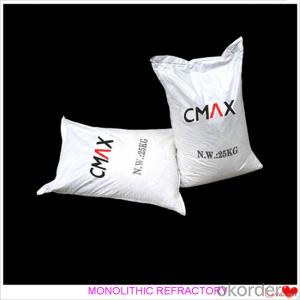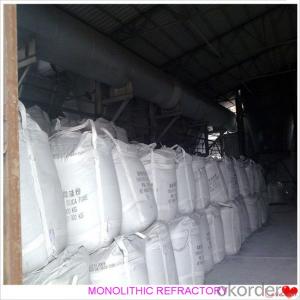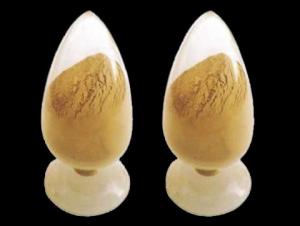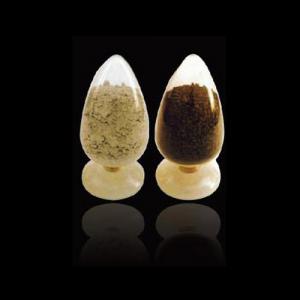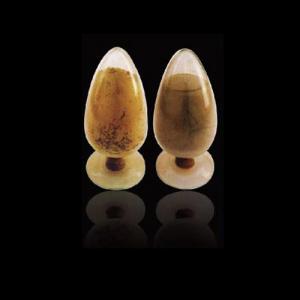Insulating Castable For Fireplace and Industrial Furnace in Iron and Steel
- Loading Port:
- China main port
- Payment Terms:
- TT OR LC
- Min Order Qty:
- 1000 kg
- Supply Capability:
- 3000000 kg/month
OKorder Service Pledge
OKorder Financial Service
You Might Also Like
Insulating Castable For Fireplace and Industrial Furnace in Iron and Steel
Product Description:
Insulating castable is manufactured according to international standards. The product is famous for its excellent abrasion resistance and low thermal conductivity. Further, these can be provided in different specifications as required by the clients. The Insulating castables are used high purity raw materials and additives as the main material, and made of under superfine powder adding technology.
Product Advantages:
The material has excellent structural stability and air tightness, and has high physical and chemical properties, also has a fine working ability.They should be used with the same material products.
Product Applications:
For feature of Insulating castable, they have excellent abrasion resistance, thermal shock resistance, high-temperature resistance, anti-corrode and have high intensity.
Designed for refractory lining of blast furnace iron and slag runners, skimmers and soon
They can be used in troughs of small and mid size BFs and in all positions of the troughs where fast tapping is required.
Product Specifications:
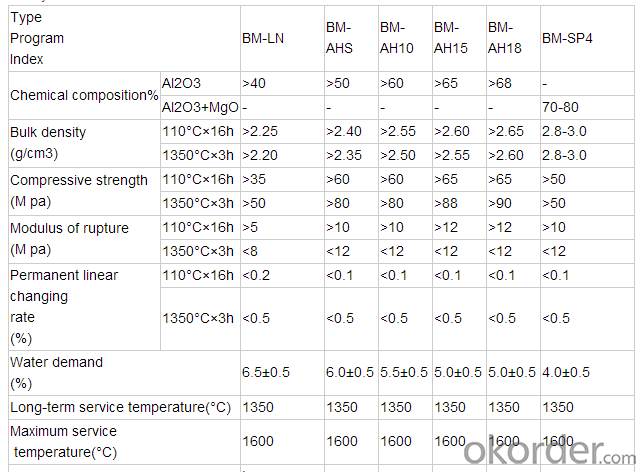
FAQ:
1. How you can control your quality?
For each production processing, we have complete QC system for the chemical composition
and Physical properties. After production, all the goods will be tested, and the quality certificate
will be shipped along with goods.
2. What's your delivery time?
It usually needs about 20days- 45 days after receiving the deposit.
3. Do you provide free samples?
Yes, we can provide a free sample for testing, If we have sample in stock,
The quantity based on the material type, The buyer should bear all the shipping costs.
4. What's your payment terms?
We can accept 30% deposit, 70% balance before shipment for ordrs over $ 2000.
5. Can we visit your Company?
Yes, certainly. You are very welcome to China and we will be honored to have a customer and friend.
Product Picture:
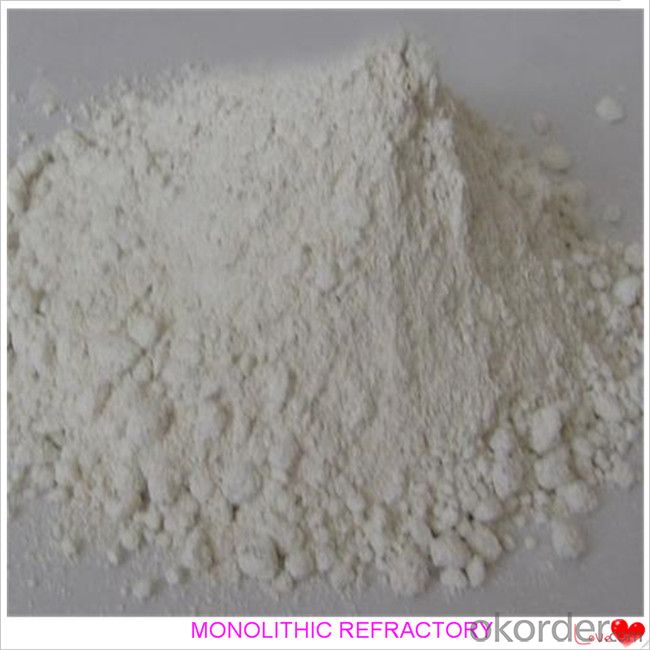
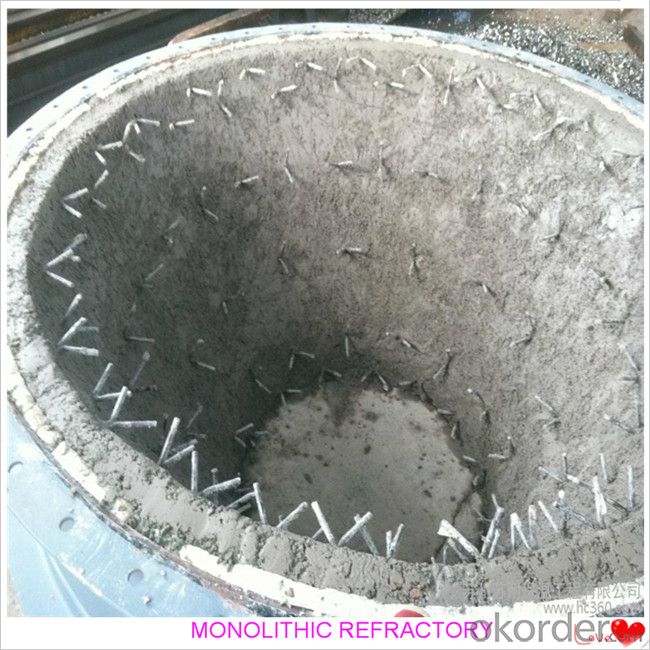
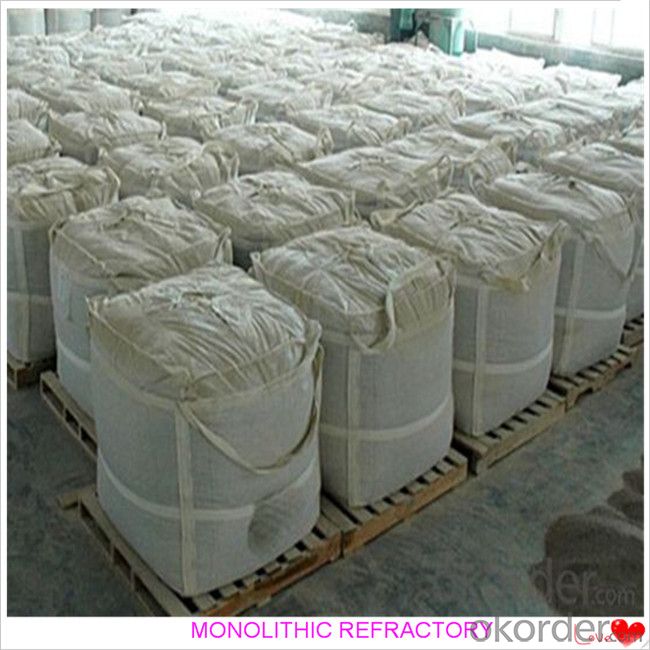
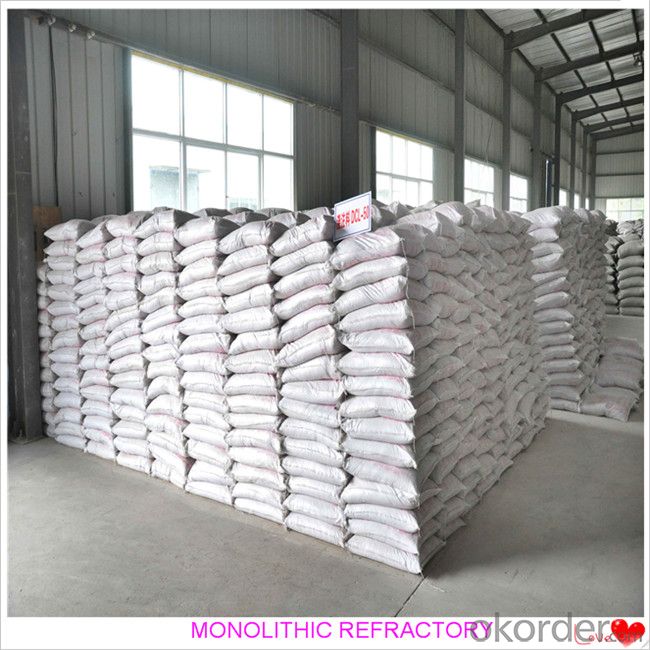
- Q:What are the environmental considerations associated with monolithic refractories?
- Monolithic refractories, utilized in various high-temperature applications, pose several environmental concerns that must be taken into account. Firstly, the production of monolithic refractories necessitates the utilization of raw materials such as clay, silica, and alumina, which are frequently extracted from the earth, resulting in habitat destruction, soil erosion, and water pollution. Furthermore, the manufacturing process of monolithic refractories commonly involves considerable energy consumption and the emission of greenhouse gases. The firing of refractory materials necessitates high temperatures, often achieved through the combustion of fossil fuels, contributing to carbon dioxide emissions and climate change. These emissions have broad environmental consequences, including air pollution, acid rain, and ozone layer depletion. Additionally, the disposal of monolithic refractories at the end of their useful life can present environmental challenges. Although monolithic refractories are highly durable and long-lasting, there may come a time when replacement or repair is necessary. The disposal of refractory waste can be problematic as it often contains hazardous substances such as chromium, lead, and asbestos. Inadequate disposal methods can lead to contamination of soil and water, posing risks to both human health and the environment. To address these environmental concerns, efforts are underway to develop more sustainable refractory materials and manufacturing processes. For instance, alternative raw materials like recycled refractory materials or industrial by-products can be employed to decrease the environmental impact of mining. Moreover, the adoption of more energy-efficient manufacturing techniques, such as utilizing renewable energy sources or implementing advanced firing technologies, can help minimize greenhouse gas emissions. In conclusion, the environmental considerations associated with monolithic refractories encompass habitat destruction, energy consumption, greenhouse gas emissions, and waste disposal. Prioritizing sustainability and implementing measures to mitigate these environmental impacts, such as using alternative raw materials, enhancing manufacturing processes, and endorsing responsible waste management practices, are imperative for the refractory industry.
- Q:How long is the lifespan of monolithic refractories in iron and steel applications?
- The lifespan of monolithic refractories in iron and steel applications can vary depending on several factors. These factors include the type of refractory material used, the specific application, the operational conditions, and the maintenance practices implemented. In general, monolithic refractories used in iron and steel applications are designed to withstand high temperatures, thermal shock, chemical attack, and mechanical stress. They are expected to have a relatively long lifespan compared to other refractory materials. Under normal operating conditions and proper maintenance, monolithic refractories can typically last anywhere from several months to several years in iron and steel applications. However, it is important to note that certain areas of the application may experience more severe conditions and may require more frequent repairs or replacements. Regular inspections and monitoring of the refractories' condition are crucial to identify any signs of deterioration or damage. Any necessary repairs or replacements should be carried out promptly to prevent further damage and minimize downtime. It is also worth mentioning that advancements in refractory technology and materials have led to the development of more durable and long-lasting monolithic refractories. These advancements have increased the lifespan of refractories in iron and steel applications, ultimately improving the overall efficiency and productivity of the operations.
- Q:What are the challenges in using monolithic refractories in the iron and steel industry?
- One of the main challenges in using monolithic refractories in the iron and steel industry is their susceptibility to thermal shock and spalling. Monolithic refractories lack the structural integrity of bricks, making them more prone to cracking and disintegration under extreme temperature fluctuations. This can result in frequent repairs and replacements, leading to increased downtime and costs for the industry. Additionally, the application of monolithic refractories requires skilled labor and precision, as their installation requires careful mixing and proper curing to ensure optimal performance.
- Q:What are the typical applications of monolithic refractories in blast furnaces?
- Monolithic refractories are commonly used in blast furnaces for various applications, including lining the hearth, taphole, and slag line, as well as repairing cracks and erosion in the furnace lining. They are also used to create a protective barrier against high temperatures, chemical reactions, and mechanical stresses inside the blast furnace.
- Q:What are the main causes of monolithic refractory failure in the iron and steel industry?
- There are several main causes of monolithic refractory failure in the iron and steel industry. One of the primary causes is thermal cycling. The extreme temperatures experienced in iron and steel manufacturing processes, such as melting, casting, and heat treating, subject the refractory lining to significant thermal stress. This repeated expansion and contraction of the material can lead to cracking, spalling, or even complete disintegration of the refractory. Another common cause of failure is chemical attack. The iron and steel industry involves the use of various chemicals, including molten metal, slag, and gases, which can react with the refractory lining. This chemical interaction can cause erosion, corrosion, or chemical decomposition of the refractory material, leading to its failure over time. Mechanical stress is also a significant factor in monolithic refractory failure. The heavy machinery and equipment used in iron and steel production can generate vibrations, shocks, and impacts that can weaken or damage the refractory lining. Additionally, improper installation or design can result in mechanical stress concentration points, making the refractory more susceptible to failure. Furthermore, improper maintenance and operational practices can contribute to refractory failure. Inadequate cooling or heating procedures, improper drying and curing of the refractory, and insufficient cleaning and inspection can all impact the longevity and performance of the material. Lack of regular maintenance and timely repairs can exacerbate small issues, leading to more significant failures over time. Lastly, the choice of refractory material and its quality can play a significant role in failure. Selecting an inappropriate refractory for the specific application or using low-quality materials can result in premature failure. It is crucial to consider factors such as temperature range, chemical exposure, and mechanical stress when choosing the refractory lining to ensure its suitability and durability in the iron and steel industry. In summary, the main causes of monolithic refractory failure in the iron and steel industry are thermal cycling, chemical attack, mechanical stress, improper maintenance and operational practices, and the choice and quality of refractory material. Addressing these factors through proper installation, regular maintenance, and careful material selection can help mitigate refractory failures and improve the overall efficiency and productivity of iron and steel production processes.
- Q:How are monolithic refractories installed and repaired in iron and steel plants?
- Monolithic refractories play a vital role in iron and steel plants, offering resistance to high temperatures and insulation. They are widely utilized in various applications, including lining furnaces, ladles, and equipment that comes into contact with molten metal. The process of installing monolithic refractories in iron and steel plants typically involves several sequential steps. Initially, the surface where the refractory material will be applied must be prepared, removing any existing refractories or contaminants. This can be accomplished through mechanical means, such as sandblasting, or through chemical cleaning processes. Following this, the monolithic refractory material is mixed with water or a suitable binder to achieve a workable consistency. The resulting mixture is then applied to the prepared surface using a variety of techniques, such as gunning, casting, or troweling. Gunning involves using a high-pressure gun to spray the refractory material onto the surface, while casting involves pouring the mixture into a mold. Troweling is a manual method that entails spreading the refractory material with a trowel. After the application of the refractory material, it must be appropriately cured or dried. This is usually accomplished by allowing the material to air dry or by employing controlled heating. The curing process is imperative to ensure that the refractory material develops the desired properties, including strength and resistance to thermal shock. Regarding repairs, monolithic refractories in iron and steel plants may deteriorate over time due to the harsh operating conditions. When repairs are necessary, damaged or worn-out sections of the refractory lining need to be identified. This can be achieved through visual inspection or non-destructive testing techniques. The repair procedure generally involves removing the damaged refractory material by chipping, drilling, or cutting. The surface is then prepared as previously mentioned, and a fresh batch of monolithic refractory material is applied to reinstate the lining. The repair material must be compatible with the existing lining and provide similar properties to ensure the overall integrity of the refractory structure. It is important to highlight that the installation and repair of monolithic refractories in iron and steel plants necessitate skilled personnel who possess knowledge of refractory materials and installation techniques. Additionally, proper safety precautions should be adhered to in order to safeguard workers from potential hazards, such as exposure to high temperatures, dust, and chemicals. Regular inspection and maintenance are also critical to identify any potential issues early on and prevent major failures that could affect production and safety.
- Q:How do monolithic refractories resist erosion from molten metals and slags?
- Monolithic refractories resist erosion from molten metals and slags through several mechanisms. Firstly, they have a high melting point, which allows them to withstand the high temperatures of molten metals and slags without any significant degradation. Secondly, they have a dense and compact structure, which reduces the penetration of molten metals and slags into their surface. Additionally, monolithic refractories often contain additives such as antioxidants or slag resistance agents, which further enhance their resistance to erosion.
- Q:How do monolithic refractories impact the quality and performance of iron and steel products?
- Monolithic refractories play a crucial role in ensuring the quality and performance of iron and steel products. These refractories are specifically designed to withstand extremely high temperatures and harsh conditions, making them an essential component in various applications within the iron and steel industry. Firstly, monolithic refractories contribute to the overall quality of iron and steel products by providing excellent thermal insulation. They help to maintain a consistent and controlled temperature environment in the manufacturing process. This is particularly important in blast furnaces, where temperatures can reach up to 2,000 degrees Celsius. By effectively insulating the furnace walls, monolithic refractories help to minimize heat loss and ensure efficient energy utilization. This ultimately leads to higher-quality products with improved mechanical properties. Secondly, monolithic refractories offer superior resistance to chemical and physical wear. In the steelmaking process, molten metal and slag can be highly corrosive, causing erosion and degradation of the refractory lining. Monolithic refractories are specifically engineered to withstand these aggressive environments, providing excellent resistance to chemical attack and mechanical stress. By maintaining the integrity of the lining, they prevent contamination and prolong the lifespan of the furnace or ladle, ultimately enhancing the quality of the final iron and steel products. Furthermore, monolithic refractories enable greater design flexibility and ease of installation. Unlike traditional refractory bricks, which require meticulous placement and fitting, monolithic refractories can be applied as a single, cohesive material. This allows for more complex shapes and structures, resulting in optimized furnace design and improved thermal efficiency. Additionally, the ease of installation reduces downtime during maintenance and repairs, ensuring continuous production and minimizing disruptions to the production process. Overall, monolithic refractories significantly impact the quality and performance of iron and steel products. They provide excellent thermal insulation, resist chemical and physical wear, and offer greater design flexibility. By ensuring consistent and controlled temperature environments, preventing contamination, and enabling efficient production processes, monolithic refractories contribute to the production of high-quality iron and steel products that meet the stringent requirements of various industries.
- Q:How do monolithic refractories improve the performance of ladles and tundishes?
- The performance of ladles and tundishes is significantly improved by monolithic refractories in various ways. Firstly, these vessels are thermally insulated by monolithic refractories, which act as a barrier against heat loss and help maintain the desired temperature. This insulation reduces energy consumption and minimizes heat loss. Secondly, monolithic refractories offer excellent resistance to chemical corrosion and erosion. When ladles and tundishes come into contact with molten metal and fluxes, they can be severely corroded and eroded. However, the use of monolithic refractories protects against chemical attacks and extends the lifespan of these vessels. This saves costs associated with frequent repairs or replacements and ensures their integrity and safety. Furthermore, monolithic refractories provide superior mechanical strength and structural stability. Ladles and tundishes must withstand the weight of molten metal and the stresses caused during pouring and handling. With high mechanical strength, monolithic refractories can withstand these loads, maintaining their shape and integrity. This reduces downtime and increases productivity in the steelmaking process. Moreover, monolithic refractories offer flexibility in design and installation. They can be shaped and applied in various configurations, allowing customization to meet the specific requirements of ladles and tundishes. This flexibility ensures a better fit and improves the overall efficiency of the refractories, ultimately enhancing the performance of the vessels. In conclusion, monolithic refractories enhance the performance of ladles and tundishes by providing improved thermal insulation, resistance to chemical corrosion and erosion, increased mechanical strength, and flexibility in design and installation. These benefits contribute to the longevity, efficiency, and cost-effectiveness of ladles and tundishes in steelmaking operations.
- Q:How do monolithic refractories withstand the mechanical impacts in furnace door applications?
- Monolithic refractories are designed to withstand mechanical impacts in furnace door applications due to their unique properties and composition. These refractories are made from a single piece of material, which eliminates the need for joints or seams that are prone to cracking or failure under mechanical stress. One important characteristic of monolithic refractories is their high density, which provides them with excellent strength and resistance to mechanical impacts. Their dense structure makes them less susceptible to cracking or breaking when subjected to sudden or repeated impacts, such as when a furnace door is opened or closed. In addition to their density, monolithic refractories also possess high tensile strength and toughness. These properties allow them to absorb and distribute the energy from mechanical impacts, reducing the risk of damage or failure. This is particularly important in furnace door applications, where the refractories are constantly exposed to the stress of opening and closing the door. Furthermore, monolithic refractories often contain additives or bonding agents that enhance their mechanical properties. These additives can include fibers or aggregates that reinforce the structure and improve resistance to impacts. They can also improve the refractory's ability to withstand thermal cycling, which is common in furnace door applications. Overall, monolithic refractories are specifically engineered to withstand the mechanical impacts encountered in furnace door applications. Their dense, high-strength composition, combined with the use of additives and bonding agents, ensures their durability and longevity in these demanding environments.
1. Manufacturer Overview |
|
|---|---|
| Location | |
| Year Established | |
| Annual Output Value | |
| Main Markets | |
| Company Certifications | |
2. Manufacturer Certificates |
|
|---|---|
| a) Certification Name | |
| Range | |
| Reference | |
| Validity Period | |
3. Manufacturer Capability |
|
|---|---|
| a)Trade Capacity | |
| Nearest Port | |
| Export Percentage | |
| No.of Employees in Trade Department | |
| Language Spoken: | |
| b)Factory Information | |
| Factory Size: | |
| No. of Production Lines | |
| Contract Manufacturing | |
| Product Price Range | |
Send your message to us
Insulating Castable For Fireplace and Industrial Furnace in Iron and Steel
- Loading Port:
- China main port
- Payment Terms:
- TT OR LC
- Min Order Qty:
- 1000 kg
- Supply Capability:
- 3000000 kg/month
OKorder Service Pledge
OKorder Financial Service
Similar products
New products
Hot products
Related keywords

